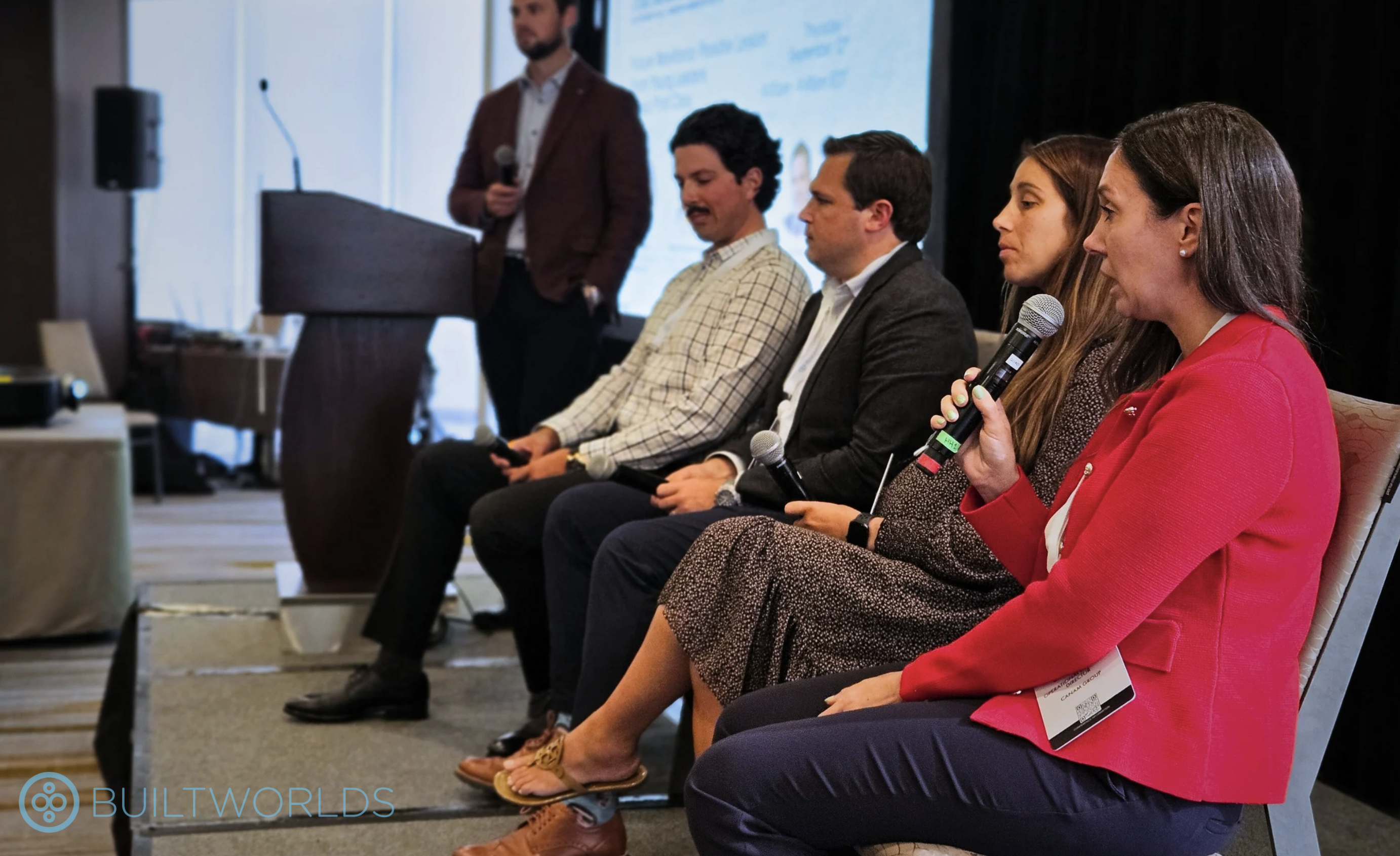
2024 Toronto Summit Panel Session with leaders from CANAM Group, CANAM Steel, Shellex, and IMEG
“Embracing technology. Construction is historically behind in the technology side and the younger generation is very interested in that. Even the trades on site are starting to use technology now…that will help attract the next generation.” Michael Martignetti, VP of sales with the Canam Steel Corporation, has clear thoughts on how the construction industry can recruit new talent. As we consider the aging workforce and increasing needs of the global construction industry, there are really only two solutions: make our existing workforce significantly more efficient, or grow the workforce. Fortunately, the right technologies can do both. For those interested in a brief history lesson, this article from 1986 provides some context to the changing times of four decades ago that led to where we are today. The workforce in the 1980s saw a significant rise in the prevalence of white-collar jobs in managerial, professional, and technical roles, while the number of blue collar jobs in manufacturing and construction were fairly stagnant. This led to a multi-decade increase in training, education, and interest in the white-collar world as computers, the internet, and other technological advancements became mainstream. White-collar jobs were also seen as safer career paths. Fast forward to today, and the dynamics have shifted. The white collar world has seen an over-saturation of the workforce that continues to accelerate through advancements in artificial intelligence technologies. At the same time, the demand for blue collar jobs continues to grow. The global construction industry accounts for approximately $13T of global spend, projected to grow to close to $20T by 2027. As the average age of the industry worker creeps up over 42, and >20% of the workforce is over the age of 55, new talent is an absolute necessity.
The Role of Innovation in Future Workforce
While it has been well-noted, by Michael Martignetti and many others, that the industry is historically a laggard in technology adoption, construction increasingly has much more to offer as a result of new and innovative solutions.
Drones are considered a standard on many larger projects, robots are finding their way to more and more jobsites, automated and remote-controlled equipment, AI solutions, AR/VR, and sleek SaaS collaboration tools are all increasingly becoming standard practices in the industry. Each of these types of solutions, among others, affords the younger generation a valuable opportunity to learn and work with cutting edge technologies that once were foreign to the industry.
The younger workforce, who grew up with nearly omnipresent access to the internet and phones, places significant value in the ability to learn and work with new technologies. The construction industry is growing into an environment that supports those interests.
Fellow panelist Melanie Bouthillette, director of strategic planning with Canam Group, hit on another key point, emphasizing the role of technology in attracting a younger workforce.
“People want to know that they have a place to grow and that there are a bunch of opportunities that they can evolve into,” she said.
An important downstream effect of the digitalization of the industry is an increasing variety of career paths in construction. While jobsite experience is critical, a career in the construction industry now provides a more varied set of opportunities through technology and innovation outside of the jobsite.
Project engineers, for example, now have more opportunities at the next level in their careers than choosing to be either an assistant PM or an assistant superintendent. They can now look at VDC roles, innovation roles, and technology-focused roles either within their organizations or across the industry. This growth in needs and skillsets can be used as a key lever to attract a more diverse workforce with varied interests.
While all of this information may be at least somewhat familiar to readers and those in the industry, it is completely foreign to those with no direct connection to construction.
“It’s not a doctor, it’s not a lawyer, it’s not a sexy career you hear about over and over again,” said Lea Cosenza, a Principal with IMEG, also on the panel, in response to a question on how to bring education to the even younger generations. “I don’t even think my kids…fully understand.”
The key determinant of the industry’s ability to recruit begins with the ability to effectively brand and communicate the benefits, including those mentioned above. Recruiting and talent professionals in the industry may in fact have the most important jobs at their organizations over the next couple of decades: find great talent, and train it to be successful.
Interested in the Future Workforce Conversation?
Check out the launch of our Future Workforce Track & Future Workforce Conference!

Discussion
Be the first to leave a comment.
You must be a member of the BuiltWorlds community to join the discussion.